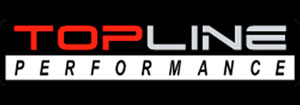Engaging with the different groups will further enhance the knowledge and often change, modify or clarify the needs.
CHPs deliver clean, low-carbon thermal and electrical energy, and were carefully sized to match the building’s electricity and hot water usage.In Barnet Copthall, CHP alone reduced carbon emissions by 91.1 tonnes pa; and by 56.7 tonnes pa for Barnet Leisure Centre..

Intelligent air handling.Air handling systems were designed to use as little energy as possible, whilst ensuring a healthy, fresh indoor environment.So demand control ventilation, activated by CO. 2. sensors, provides an optimal level of fresh air in fitness areas.

And in the same way, an advanced, mixed mode system with Building Management System control, ventilates the sports halls.By using low energy passive ventilation for periods of lower use, but powerful mechanical ventilation at peak times, it minimises energy consumption whilst maximising the comfort of users.

Occupant thermal comfort modelling demonstrated that mechanical systems were able to keep people at a comfortable temperature, whatever the weather.
This gained HEA04 BREEAM credits, and contributed to the projects’ BREEAM Very Good rating.. A-rated energy performance.In essence, the proposed model here is the same as for repowering coal.
We need to figure out how to make highly productive, manufactured products, in highly automated environments.Ultimately, this would create the opportunity to move away from electricity generation, which is tethered to a transmission system and the electricity market, towards a commodities based system, focused around the production of a product which can be stored, transported and exported to global markets.
This is how we can free up siting opportunities, and enable very scalable, offshore siting to really come into its own.. We should also be looking to appropropriate some of the existing petrochemical supply chain, adopting its relevant skills, and the existing oil and gas infrastructure, and moving these elements into a better space.We’ll make the adoption of new, clean fuels much more likely if we create drop-in, substitute fuels that can be produced at a comparable cost, with the same performance, as the fuels we use today, and then distribute them through the existing supply chain infrastructure.. Reducing risk as we decarbonise.
